

SRTLab
Receivers testing and characterization for concentrating solar thermal systems
This activity line comprises both linear receivers and volumetric receivers. The equipment associated to linear receivers is located at PSA and its main device is a test bench called HEATREC for measuring heat loss of single receiver tubes under indoor laboratory conditions. Heat loss measurements can be done under vacuum conditions to avoid convection outside the glass tube, thus obtaining a more uniform temperature along the receiver section and looking for the heat loss by radiation. In addition, is possible to determine heat loss at different vacuum levels in the space between the metallic absorber tube and the glass envelope. The emissivity of the selective coating can be then inferred from these measures.
HEATREC device lets to characterize heat losses of receiver tubes with inner diameter greater than 62 mm and tube length lower than 4.5 m. Measurements can be performed for absorber temperature ranging from 100°C to 500°C. The vacuum in the test chamber can be set up to around 10-2 mbar.
Besides HEATREC, the activity line devoted to linear receivers is equipped with tools and devices for proper manipulation and monitoring of receiver tubes.
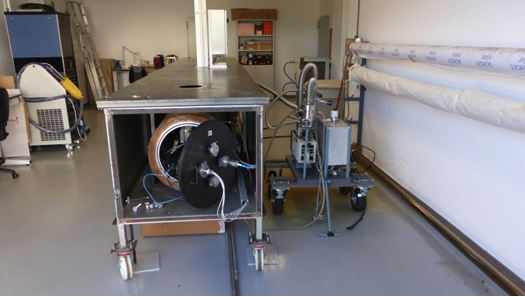
The lab equipment devoted to volumetric receivers is installed at CIEMAT-Moncloa (Madrid) site with the aim of studying in depth at lab scale the solar volumetric technology. Its main component is a test bench specially designed for the test of new volumetric absorbers and configurations and its ageing. This test bench has the flexibility to study:
- The pressure difference across the volumetric absorber for different fluid density and fluid velocity, for the determination of the main properties described by the Forchheimer extension to Darcy’s law: the viscous permeability coefficient and, the inertial permeability coefficient. A differential pressure drop system is installed, with the previously described installation, for the properties determination
- The extinction coefficient of different mediums, which can be used as a tool to approximate radiation analysis in semi-transparent mediums following the Bouger’s law.
The main equipment installed in this test bench (Figure 7) is:
- Receiver sub-system: with 24 K-type thermocouples, 2 surface thermocouples and an infrared camera,
- Helicoidal Air-Water Heat Exchanger sub-system: with 4 PT100 sensors, a water mass flow-rate measurement, a water pump and 2 surface thermocouples,
- Extraction system: with 1 k-type thermocouple, 1 PT100 sensor, an air mass flow-rate measurement, and an air blower.
- A 4-kW solar simulator, installed in CIEMAT-Moncloa made up of a Xenon lamp and a parabolic concentrator (Figure 8) that can reach fluxes of up to 1400 kW/m2.
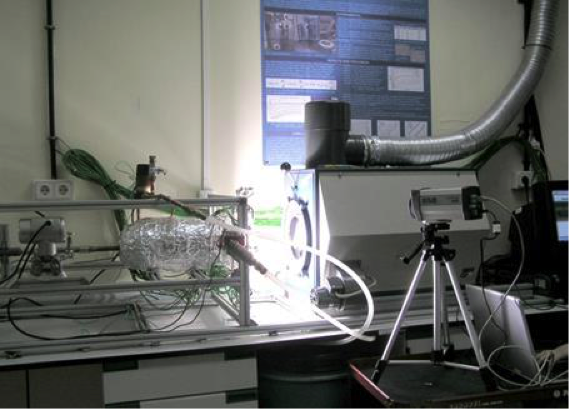
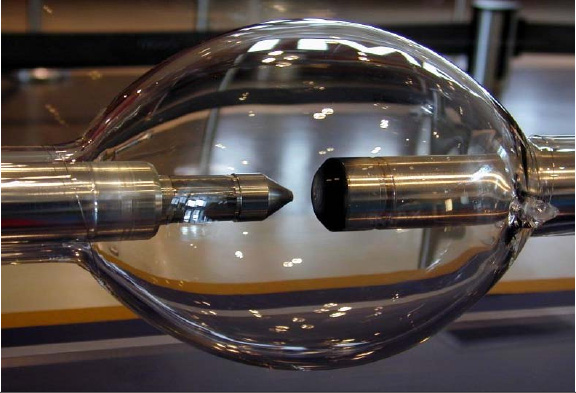
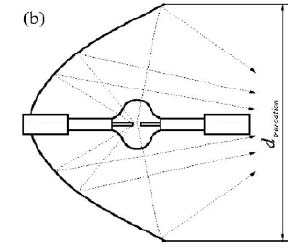
The lab-equipment described above to study volumetric receivers at atmospheric pressure is complemented by an indoor small facility to study thermal storage materials for high temperature using hot air as heat transfer fluid. This small facility is composed of a thermocline storage test bench (of about 0.1 m3) as experimental loop for static and dynamic (Figure 10) thermal characterization of porous beds.
The system consists of six power heating resistor with a total power of 15000 watts electric energy. They heat the air up to a target temperature (maximum temperature limited by the resistor is 1000°C) by means of a temperature controller. An amount of 35 K-type thermocouples units of 400 mm long are used. The behaviour of the tank is measured at 7 levels with 5 measurement each level. The total power consumption is recorded, with a three-phase electrical measurement, to match the energy balances and the heat losses. Moreover, the external surface temperature mapping is registered by a thermograph camera, which offers a complete image of the external chassis of the tank.
The two possible configurations of this test bench are:
- Static configuration: In this configuration, the experimental loop allows the characterization of effective thermo-physical parameters of the bed; material thermal conductivity, thermal losses, stored energy, etc. for different filler materials,
- Dynamic configuration: In this configuration, the experimental loop allows an agile characterization of the global storage at different working temperatures, filler materials, charges and discharges strategies, etc.
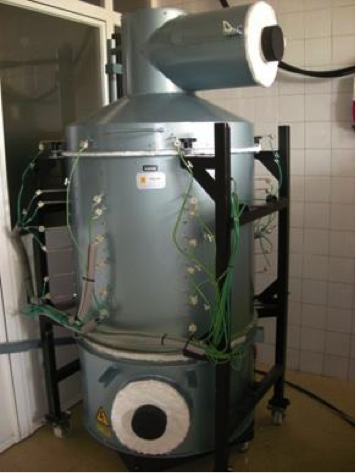
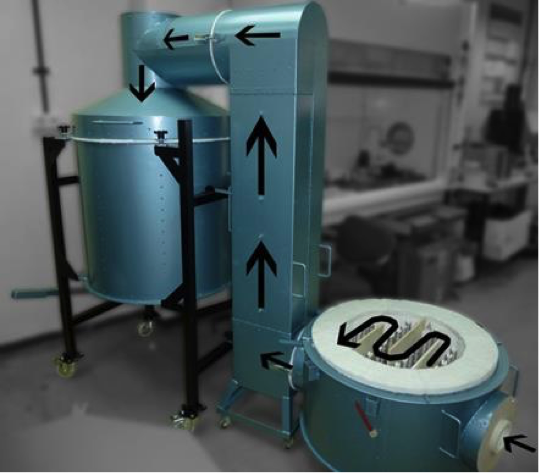
(Right) Front view of the lab-scale regenerative storage system in dynamic arrangement.